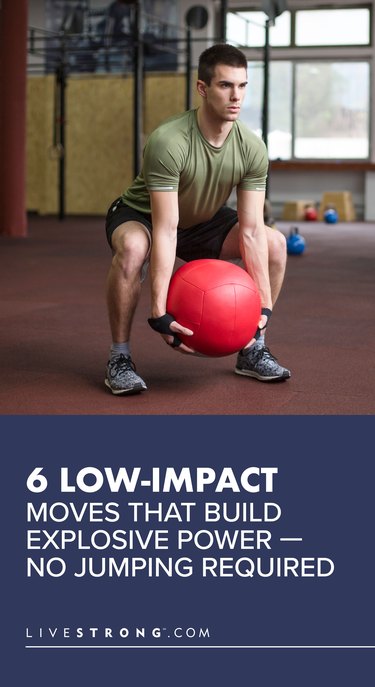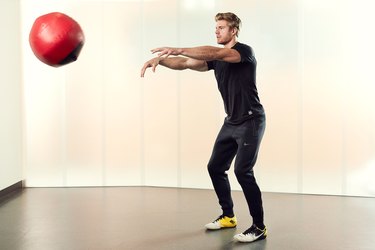
Whether you to look like Dwayne "The Rock" Johnson, PR your next race or build muscle and strength more efficiently, training for power is key. The problem is that traditional power-building exercises are usually also high-impact, which can put tons of stress on your joints.
And even if your knees, back and hips can handle high-impact moves, it's still a good idea to take a break from them to promote recovery and decrease your risk of injury. The following six exercises are low-impact moves or variations of traditional ones that will help you build power without all the stress.
Video of the Day
Video of the Day
Do each of the following moves for 3 to 5 sets of 6 reps for a true power-focused workout, or do 15 to 20 reps of each to build power with an emphasis on endurance, too.
1. Medicine Ball Chest Pass
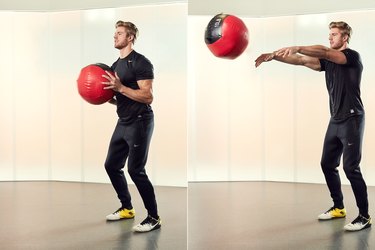
- Sit or stand facing a wall, holding a medicine ball at chest height and close to your body.
- Explosively throw the ball to the wall without allowing your hips to rotate or move.
- As the ball bounces back, catch it at chest height. If the ball drops below your chest before you catch it, you may need to move closer to the wall or throw the ball harder.
Tip
For this upper-body power move, make every throw as hard as possible, keeping your abs engaged and hips back. Make sure you don't overarch your lower back.
2. Medicine Ball Lateral Scoop
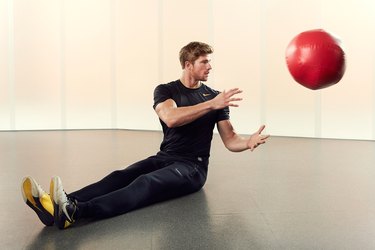
- Sit with a wall at your side, holding a medicine ball against your waist. Keep your abs engaged to prevent your low back from arching.
- Without letting your hips rotate, bring the ball to the outside of the hip furthest from the wall.
- Throw the ball explosively against the wall in a scooping motion.
- Catch the ball and reset before going into the next throw.
Tip
The key is to keep your hips from rotating. Your upper back can rotate as you throw the ball as long as the hips and low back stay facing forward.
3. Medicine Ball Slam
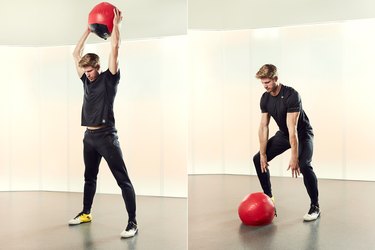
- Stand with your feet slightly wider than hip-width apart. Keep your abs engaged and don't arch your lower back.
- Raise the ball overhead.
- Explosively slam the ball to the ground and you bend your knees into a half squat.
- Catch it on the bounce and move straight into the next rep, straightening your legs as you stand up.
4. Kettlebell Swings
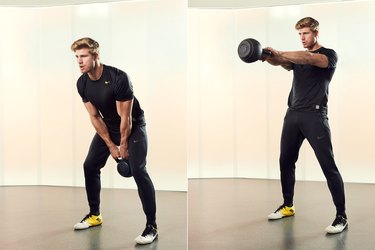
- Stand with your feet about hip-width apart. Hinge your hips back, not down, and grab the kettlebell with both hands in front of you. Keep your abs engaged and your back neutral.
- Lift the bell off the floor and swing it behind you.
- Explosively stand up and push your hips forward, squeezing the glutes and swinging the kettlebell forward and up to shoulder height.
- Let the kettlebell swing back down with control as you reverse the motion into your next rep.
Tip
Try not to use your arms to lift the kettlebell to the top position — it’s all about gravity. You should feel the work taking place in your hamstrings and glutes.
5. Incline Power Push-Up
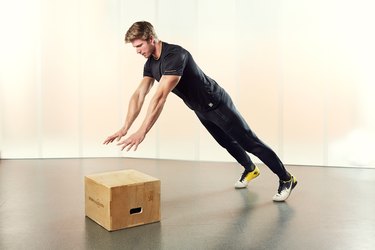
- Assume a push-up position — a high plank with your hands beneath your shoulders. Place hands on a weight bench, box or step. Engage your abs to prevent the low back from sagging or arching.
- Lower your chest, bending your elbows at a 45-degree angle to your body.
- Explosively push off so that your hands leave the surface that you're on.
- Catch yourself softly with arms slightly bent.
Tip
This move helps improve explosive upper-body pushing power while the elevated landing helps reduce the impact forces on your shoulder and elbow joints.
6. Single-Arm Dumbbell Push Press
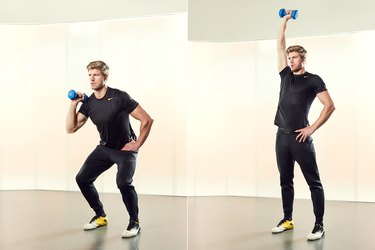
Olympic lifts are a staple in many training programs designed for power development, and for good reason: They work! The problem with these moves is they require the lifter to receive a heavy load quickly, resulting in a high amount of compressive force. You can get the same benefits of these moves without the stress with the single-arm dumbbell push press.
- Start with one dumbbell at shoulder height. Keep the core engaged as you push your hips back, not down.
- Explosively reverse directions and as you approach standing position, push the dumbbell toward the ceiling, using the momentum from the leg drive.
- Hold the top position for one second, then lower the weight back down to shoulder height with control.
- Do all your reps on one side, then switch hands and repeat on the other side.
The Problem With Traditional Power Exercises
In general, most of the exercises that focus on building power (think: sprints, squat jumps and Olympic lifts) are incredibly effective, but they can also be very stressful on your muscles and joints.
For example, when you're sprinting, the force of your body making contact with the ground can be up to five times your body weight, according to June 2017 research published in the ISBS Proceedings Archive. That's a significant burden for your body.
The same goes when landing from a jump: Depending on the height of the jump, the impact on your body can exceed four times your body weight, according to an October 2015 paper published in the Journal of Structural Engineering.).
What's bearing the brunt of all this added force? Your ankles, knees, hips and sometimes your back. And if you're already at risk for joint pain or injuries, you're only upping that risk with plyometrics (jumping exercises).
Click below to pin and save these moves for later!
